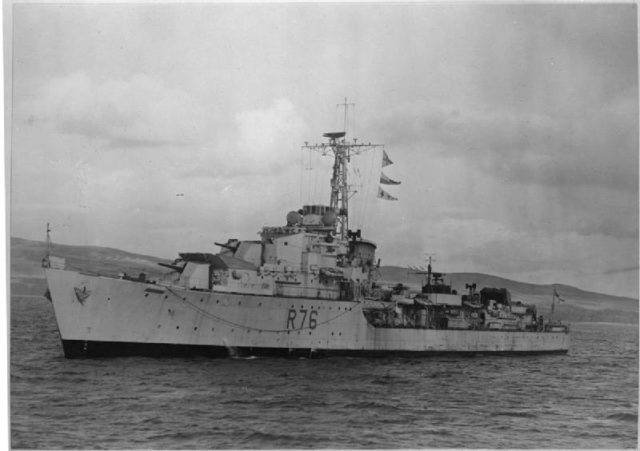A hero succumbed to his wounds on November 28, 1949. It was a period of grinding struggle during the Chinese civil war, when the HMS Amethyst was tasked with a dangerous mission on the Yangtze River. The name of the hero in question was Simon, and he had the most important role of catching mice on the ship. He was the ship’s “Able Seacat.”
On April 20, 1949, HMS Amethyst, commanded by Lieutenant Commander Bernard Skinner, was on her way from Beijing to Nanjing to replace HMS Consort. The Consort was a guard ship for the British Embassy during the Chinese civil war, a very important task for the Royal Navy.
Known as the Yangtze Incident, the Royal Navy frigate HMS Amethyst was trapped on the Yangtze River for three whole months. The ship could not return to the open seas and was forced to stay put, with scarce food supplies, until help arrived. Luckily for all onboard, the ship’s cat, Simon, was responsible for protecting the supplies, killing off an entire rat infestation, raising morale, and warding off disease during the harsh period.
Simon received a Dickin Medal and the honorific title of “Able Seacat” when, despite his weakened state, he caught an elusive rat that had plagued the ship’s scarce food supply for too long. Humorously, the crew nicknamed the giant rat “Mao Tze Tung.”
As an undernourished and sickly waif, Simon had been rescued by 17-year-old Ordinary Seaman George Hickinbottom, who found him wandering the Hong Kong dockyards in March 1948. Hickinbottom was a member of the crew of the Amethyst and he was stationed in the city during the late 1940s.
Pitying the kitten, who looked to be barely a year old, Hickinbottom took Simon under his tunic and stealthily smuggled him aboard the ship. In no time, Simon regained his strength and was getting along very well with the crew, and started catching mice between the narrows of the decks. Simon was adored by all the sailors, and his most famous party trick was adeptly fishing ice cubes out of water jugs with his paws, much to the crew’s amusement.
He also had a penchant for sleeping in the captain’s hat and leaving dead rats at cabin doors as presents for the sailors who also called him by the name “Blackie.” In a cat’s language, this meant “I am teaching you naked monkeys to hunt so you can feed yourselves” in a very respectful manner.
In 1948, the ship’s commander, Ian Griffiths, was replaced by Lieutenant Commander Bernard Skinner, who immediately became friends with Simon. It was Skinner’s first mission as commanding officer to get from Shanghai to Nanjing to replace the duty ship there, HMS Consort.
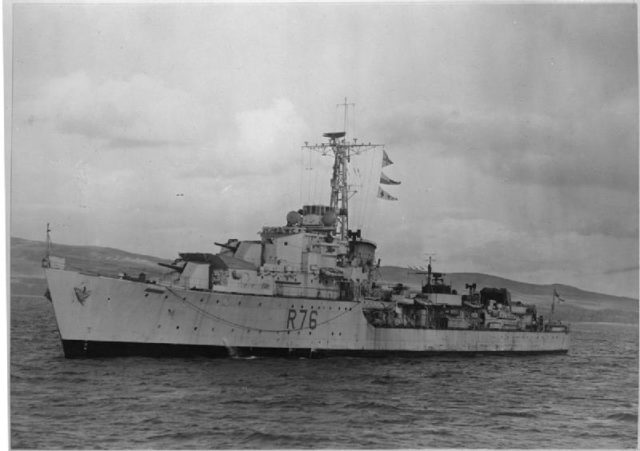
Sadly, the cat-and-captain friendship between Skinner and Simon ended when during the month of April 1949, HMS Amethyst was attacked by a Chinese gun battery without warning or reason. Britain did not take any sides in the war, and the ship was displaying Union Jack flags, as well as a White Ensign for nonviolence. There was absolutely no reason for the Chinese Communist gun battery to attack the ship.
After many heavy casualties from cannon fire and barrages, the ship remained trapped in the river for three months, not wanting to risk advancing to Nanjing until it was considered safe. Negotiations for a ceasefire with the Chinese Communists for the ship’s release dragged on.
This was due to the Chinese Army demanding admission from the British that HMS Amethyst had fired the first shot, which was not true. Many attempts at rescue by Royal Navy ships were made but to no avail.
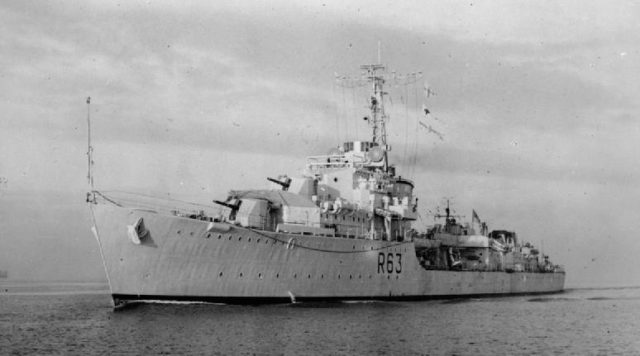
The first shots from the Chinese missed the ship, but the second barrage split open the captain’s cabin, killing 25 sailors and seriously wounding the captain and Simon. Lieutenant Commander Skinner, wounded, died shortly after the barrage.
During the attack, Simon was shell-shocked and badly wounded from shrapnel. Lucky for him, P/O George Griffiths found him among the chaos and debris and rescued the fortunate sea cat.
His whiskers and eyebrows were burned off, his heart was weakened, he was bloody from shrapnel, dehydrated, and very frightened. It was a miracle how Simon managed to preserve his sensitive cat-hearing after the cannon blasts.

Griffiths rushed him to surgery, and the medic scrambled to mend Simon’s wounds as he would if he were was one of his fellow sailors. Nobody expected Simon to survive the injuries during the night. But Simon’s perseverance triumphed.
After Simon’s miraculous recovery, despite the indifference he faced from Lieutenant Commander John Simon Kerans, Skinner’s replacement as captain, Simon happily returned to his former duties. The many casualties from the attack lay wounded and dying in the sick bay, with only Simon’s calm purring and kneading keeping them company.
The doctor thought this may have been soothing for the nerve-wracked sailors. The cat was welcome in every bed to help them get over the shell-shock and trauma.

The demanding and strict captain Kerans was now in charge of the ship. He came aboard as replacement captain after traveling overland from Nanjing, bringing with him medical supplies and other resources. The new captain was not much of a cat fan, and he made it clear he wasn’t going to share his quarters with a feline.
Naturally, Simon’s cat curiosity got the better of him and he began to search the decks for his master. The search was over when the funeral service began and the men honored the fallen, committing the bodies to the water, with Simon watching the ceremony from the side.
After the funeral, Simon, as he usually did, went to the captain’s quarters and curled up in his cap, which with the captain led to a harsh evicting. But eventually, when Kerans caught a virus, Simon won his heart by keeping him company on his bed.

Finally, after running low on resources and three months of fear and uncertainty, the Amethyst finally made a run for it on the night of July 30, 1949. With luck on her side and under the veil of darkness, the ship managed to slip past enemy guns. It took considerable damage but was able to continue out to the open sea, where it was met by HMS Consort.
After 101 days the episode was finally over. Upon returning home, King George VI sent his congratulations and a presentation was made on deck, recollecting what happened during the three months and what the crew had been through.
Simon was awarded the Amethyst campaign ribbon, while a citation was read out by P/O George Griffiths. Along with the Amethyst Campaign Medal and the Dickin Medal for “sustained gallantry in dispatching Chinese rats,” Simon also received a Blue Cross Medal. He was the only cat on the list of the Dickin Medal recipients.
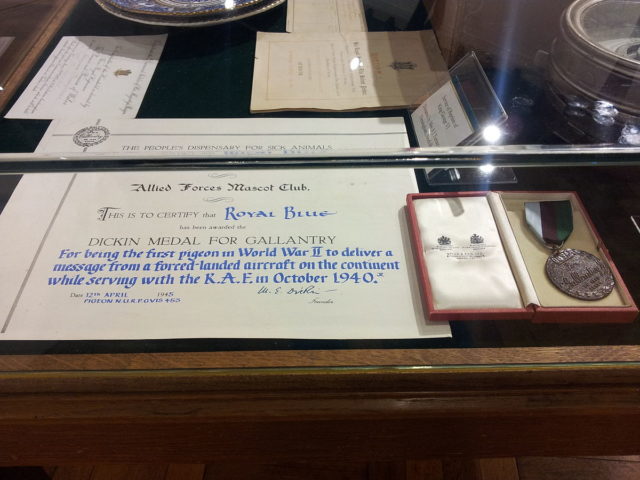
The crew were lauded as heroes of the Royal Navy, while Simon got his own “cat officer” to deal with the thousands of fan letters that were sent to the sailor cat. He was now a celebrity, and a very special welcome was made for him at Plymouth.
Simon’s medal presentation was set for December 11. The honorable instigator of the medal, Maria Dickin (then 79), was to be present, along with the mayor of London, to congratulate the crew for outstanding bravery. Alas, it was not to be.
As they were entering the UK, Simon was subject to quarantine regulations in the animal center in Surrey. A vet was urgently sent to check Simon’s condition and stated that the brave cat had a high temperature and acute enteritis.
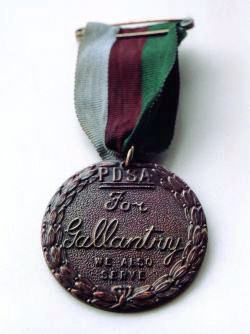
Ironically, he contracted a virus while contained in quarantine and he was given an injection and pills, and a good rest. Despite the care of medical staff and all the hope in the world with a sailor sitting beside him all night, by the morning of November 28, the brave soul faded away.
He was still a young cat, only two years old, and more than half had been spent serving in the Navy.
Lieutenant Commander Kerans and the crew were devastated by the loss of their fellow sailor. The quarantine was flooded with flowers, cards, and letters to Simon when his death was announced. Even his photograph was included in the obituaries of Time magazine.
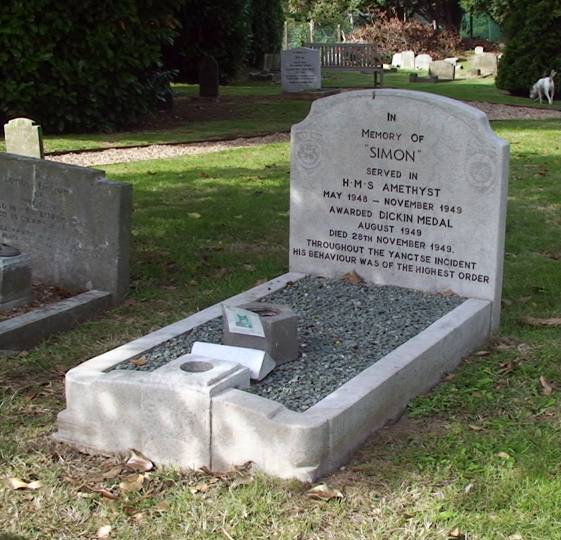
Simon’s final resting place is plot 281 of the PDSA’s pet cemetery in Ilford, Essex, surrounded by feline and canine heroes of war. He was buried with naval honors in a Union flag-draped casket, specially made for him.
A short ceremony was held by the rector of St. Augustine Church. Simon’s name is engraved on the Animals in War Memorial, in Park Lane, London. Hundreds of people, including the entire crew of HMS Amethyst, attended his funeral. His biographers wrote: “…the spirit of Simon slipped quietly away to sea.”
For his outstanding contribution and sacrifice, his tireless rat-catching while wounded, along with miraculously surviving enemy shrapnel, Simon was the first cat to receive the Dickin Medal, the animal award for gallantry.
It was often referred to as the animals’ Victoria Cross. He was the first, and to this day, the only cat to receive this well-deserved honor.
